What Is Nicotine?
Nicotine is a psychoactive chemical that speeds up signals in the brain. It’s the main ingredient in tobacco and is most commonly consumed that way, but can also be consumed directly in the form of nicotine gum and vapes.
The consumption of nicotine goes back tens of thousands of years. A recent study in the scientific journal Nature found evidence of human tobacco use as far back as 12,300 years ago. Native peoples in the Americas used tobacco in religious and medicinal contexts for thousands of years before Europeans arrived.
The plant was brought to Europe by Spanish explorers in the late 15th and early 16th centuries. In the early 16th century, Jean Nicot, the French ambassador in Lisbon, Portugal, sent tobacco and seeds to Paris, introducing the plant to France. It is from him that Nicotine derives its name.
Today, nicotine is one of the most commonly consumed drugs in the United States, behind only marijuana and alcohol in popularity.
Some other facts about nicotine include:
-
- Twenty-two percent of Americans (about 61.6 million people) reported using tobacco products or vaping nicotine in the past month
-
- Smoking cigarettes remains the nation’s leading cause of preventable disease, disability, and death.
-
- According to the World Health Organization, there are over eight million deaths caused each year by tobacco, worldwide
-
- Most adult smokers want to quit, but only 6.2% manage to successfully do so
In this article, we’ll cover is nicotine a stimulant, the dangers of nicotine, and how to quit smoking.
Is Nicotine a Stimulant?
Yes, nicotine is a stimulant. It increases adrenaline, which means higher feelings of alertness. This process also raises your heart rate, blood pressure, and breathing rate.
Nicotine also enhances the activity of the neurotransmitter dopamine in the reward circuits of the brain, which plays a significant role in creating the feelings of pleasure and reinforcement that make nicotine, and by extension tobacco products, addictive.
Despite these stimulating effects, due to its highly addictive nature and its association with severe health risks (like cardiovascular disease, respiratory disorders, and cancer), nicotine use is generally discouraged by the medical community.
What Are the Dangers of Nicotine?
Even though it’s not the direct cause of most smoking-related diseases, nicotine is addictive and plays an important role in tobacco-related health dangers. In addition to the increased risk of cancer and other serious conditions, nicotine use can lead to:
- High blood pressure
- Increased heart rate
- Nausea
- Headaches
- Fatigue
- Anxiety and depression
Long-term use of nicotine has also been linked to an increased risk of the following::
- Stroke
- Coronary artery disease
- Poor circulation
While nicotine itself is not known to cause cancer, the American Cancer Society states that at least 70 chemicals found in tobacco smoke can cause cancer. Also known as carcinogens, these cancer-causing chemicals are released by the same tobacco products that contain nicotine.
Different products deliver nicotine in different ways, and some may expose users to additional risks:
- Cigarettes and Cigars
- Chewing Tobacco
- Nicotine Pouches
- Vaporizers/Vapes
It’s important to note that not all sources of nicotine are the same. However, no matter what type of product it comes from, nicotine is still highly addictive and can cause serious health complications. If you think you may be at risk of becoming dependent on nicotine, it’s important to talk to your doctor or a healthcare professional about ways to quit.
Cigarettes and Cigars
In addition to nicotine, smoke from cigarettes and cigars contains thousands of chemicals, many of which are toxic or carcinogenic (cancer-causing). The risks include heart disease, stroke, lung diseases, diabetes, and chronic obstructive pulmonary disease (COPD), which includes emphysema and chronic bronchitis.
Smoking also increases the risk of tuberculosis, certain eye diseases, and problems of the immune system, including rheumatoid arthritis. Most notably, smoking is a leading cause of cancer and death from cancer.
Chewing Tobacco
This form of tobacco contains nicotine but also exposes users to other harmful chemicals. These products are associated with an increased risk of oral cancers (mouth, tongue, cheek, and gums), esophageal cancer, and pancreatic cancer. They can also lead to gum disease, tooth decay, and tooth loss.
Nicotine Pouches
Nicotine pouches are a type of smokeless tobacco product. The health risks associated with these products are not fully understood because they’re relatively new. However, they contain nicotine, which can lead to addiction and may contain other harmful chemicals. As with other forms of smokeless tobacco, there may be an increased risk of oral health problems and cancer.
Across all these products, nicotine itself can increase heart rate, raise blood pressure, and potentially contribute to cardiovascular disease. It’s also highly addictive, which can lead to long-term use and increased exposure to harmful substances. It’s especially dangerous for certain populations, such as pregnant women, because it can harm fetal development.
Vaporizers/Vapes
E-cigarettes, or vapes, contain fewer harmful chemicals than traditional cigarettes and cigars, but they are not without risks. The liquid used in e-cigarettes (often referred to as vape juice or e-liquid) usually contains nicotine, which can lead to addiction. Some e-liquids also contain harmful chemicals like formaldehyde, acrolein, and acetaldehyde.
There’s also a risk of lung injury associated with e-cigarette use, known as EVALI (e-cigarette or vaping product use-associated lung injury). The long-term health effects of e-cigarettes are still not fully known, as these are relatively new products.
Does Vaping Cause Hair Loss?
This is interesting. While there is no direct evidence linking vaping to hair loss, nicotine does constrict blood vessels. Constricting blood circulation prevents nutrients from reaching cells in your hair follicles.
Nicotine is delivered in much higher concentrations than found in a traditional cigarette – for every 15 pulls on a vape a person consumes 0.5 to 15.4 milligrams nicotine vs 6 to 28 milligrams for a cigarette. Because of this, it’s reasonable to believe vaping may increase your risk for hair loss.
Get confidential help from our addiction treatment specialists in Orange County. Call to join our rehab program today!
Call 866-881-1184How To Quit Smoking
By quitting smoking or vaping, you can reduce the risks associated with using nicotine and potentially improve your overall health in the long run. Quitting doesn’t have to be difficult; there are a number of resources available, such as counseling and support groups, that can help you quit. With the right tools and support, quitting can be a rewarding experience.
Remember, quitting nicotine use is a journey and it’s different for everyone. It’s okay to seek help and use the resources available to you. Above all, it’s important to keep trying, even if you slip up, every step towards quitting is progress.
Tips for Quitting Nicotine Use
Quitting nicotine is a significant challenge due to its addictive nature, but it’s also one of the best things you can do for your health. Here are some tips to help you quit:
- Make a plan
- Understand your triggers
- Find a support system
- Stay active
- Eat a healthy diet
- Practice stress management techniques
- Celebrate your victories
- Don’t get discouraged by slip-ups
- Consult a professional
- Consider Nicotine Replacement Therapy (NRT)
- Discuss prescription medication options
Make a Plan
Set a quit date and stick to it. This gives you time to prepare and start on a less stressful day. By making a plan to quit smoking cigarettes or any other nicotine products, it’s important to set realistic goals and practice self-compassion throughout the entire process.
Understand Your Triggers
Identify the situations, emotions, or people that make you want to use nicotine, and come up with a plan for how you’ll handle those triggers when they arise.
Find a Support System
Connect with friends, family, or a support group who can provide encouragement and understand what you’re going through.
Stay Active
Regular physical activity can reduce your nicotine cravings and help you deal with withdrawal symptoms.
Eat a Healthy Diet
Eating well can help you feel better overall and deal with withdrawal symptoms. Avoid using food as a substitute for smoking or other forms of nicotine use; instead, try to eat a balanced diet.
Practice Stress Management Techniques
Techniques like meditation, deep breathing, and yoga can help manage cravings.
Celebrate Your Victories
Whether you’ve gone a day, a week, a month, or a year without nicotine, celebrate that success. This can help you stay motivated.
Don’t Get Discouraged by Slip-Ups
If you do use nicotine again, don’t get too discouraged. Instead, see what you can learn from the situation and adjust your plan as needed. Remember, it’s a journey, and every step toward quitting counts.
Consult a Professional
Consider getting help from a counselor or therapist trained in addiction. This person can provide strategies to deal with cravings and emotional symptoms of withdrawal.
Discuss Prescription Medications Options
Some medications, like varenicline or bupropion, can help reduce cravings and withdrawal symptoms. Talk to your healthcare provider to see if these may be right for you.
Consider Nicotine Replacement Therapy (NRT)
Products like nicotine gums, patches, inhalers, or lozenges can help curb your cravings for nicotine. They release nicotine into your bloodstream at lower levels and without the harmful chemicals found in tobacco. Always use these products as directed.
Remember, quitting nicotine use is a journey and it’s different for everyone. It’s okay to seek help and use the resources available to you. Above all, it’s important to keep trying, even if you slip up, every step towards quitting is progress.
Addiction Treatment at South Coast Behavioral Health
For those struggling with nicotine addiction, South Coast Behavioral Health offers compassionate and affordable addiction treatment.
The first step is going through a medical detox. Our medical detox program in California is staffed by caring and compassionate professionals who can provide you with medications to manage your withdrawal symptoms.
At South Coast, we take pride in offering care that is closely tailored to specific issues. To that end, we offer gender-specific detox programs, with medical detox for men in Irvine, CA, and medical detox for women in Huntington Beach, CA.
After detoxing, proper treatment can begin.
Treatment for substance abuse takes place along an entire spectrum of care. Along that entire spectrum are various behavioral therapies, support groups, and the use of medically-assisted treatment (MAT).
These levels of treatment are, in order, as follows:
Residential Treatment in California
After successfully completing medical detox, you’ll move to inpatient treatment in Orange County California. There, you’ll receive medically-assisted treatment and dual diagnosis treatment to deal with any cravings or co-occurring mental health issues you may be battling. We also offer residential treatment facilities in Costa Mesa, Irvine, and Huntington Beach for those who desire gender-specific treatment. There, patients get round-the-clock medical attention and monitoring while living at the institution full-time.
In addition to individual and group counseling and medication management, you’ll also have access to leisure activities and family support services.
Partial Hospitalization in California
Most clients start substance abuse treatment with South Coast in our residential treatment program. After completing that, many desire something that still provides structure and support, but with extra space and time to oneself. For that, we offer Partial Hospitalization in Newport Beach.
A step down from inpatient care but with more structure than conventional outpatient programs, partial hospitalization offers a good balance for those looking to ease back into normal life. Clients can receive care five to seven days a week for a number of hours each day, returning back to their homes in the evening.
This way, they can recover without putting their daily lives completely on hold, receiving intense therapeutic interventions like group and individual therapy, skill development, and medication management as necessary.
Intensive Outpatient Treatment in California
For those leaving inpatient residential treatment or partial hospitalization, intensive outpatient programs (IOP) are yet another gradual step forward on the road to recovery.
With a focus on group therapy, individual counseling, and education, clients undergoing Intensive Outpatient Treatment in Newport Beach can meet three to five days a week. Each session lasts three hours.
This level of care requires the least amount of attendance at a facility.
Looking for quality substance abuse treatment that’s also affordable? South Coast accepts most major insurance providers. Get a free insurance benefits check now.
Check Your CoverageGet Started Today
If you or a loved one are struggling with substance addiction but wonder how long addiction counseling takes or have other questions, call us at 866-881-1184 or contact us here. Our highly qualified staff will be happy to help give you an idea of what to expect from your addiction recovery timeline, help verify your insurance, and assist with any other questions you may have.
- Earliest evidence for human use of tobacco in the Pleistocene Americas | Nature Human Behaviour
- Harmful Chemicals in Tobacco Products | American Cancer Society
- What is the scope of tobacco, nicotine, and e-cigarette use in the United States? | NIDA
- Fast Facts and Fact Sheets | Smoking and Tobacco Use | CDC
- Tobacco | WHO
- Smoking Facts and Statistics | Tobacco Free Life
- Effects of Nicotine During Pregnancy: Human and Experimental Evidence | PMC
- Bupropion for the treatment of nicotine withdrawal and craving | PubMed
- Varenicline | StatPearls | NCBI Bookshelf
- E-cigarette, or Vaping Product, Use Associated Lung Injury (EVALI) | Fact Sheets | Yale Medicine










